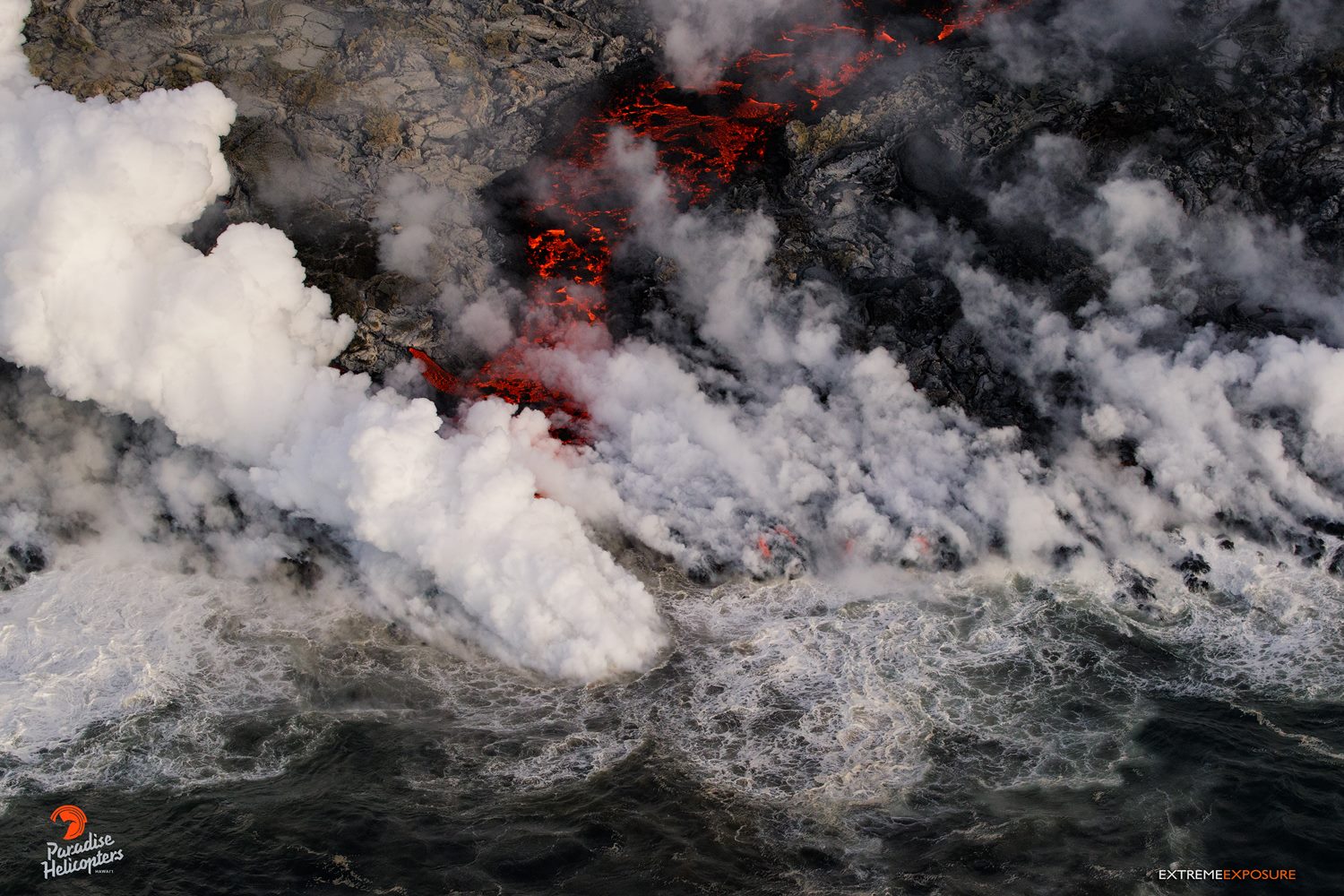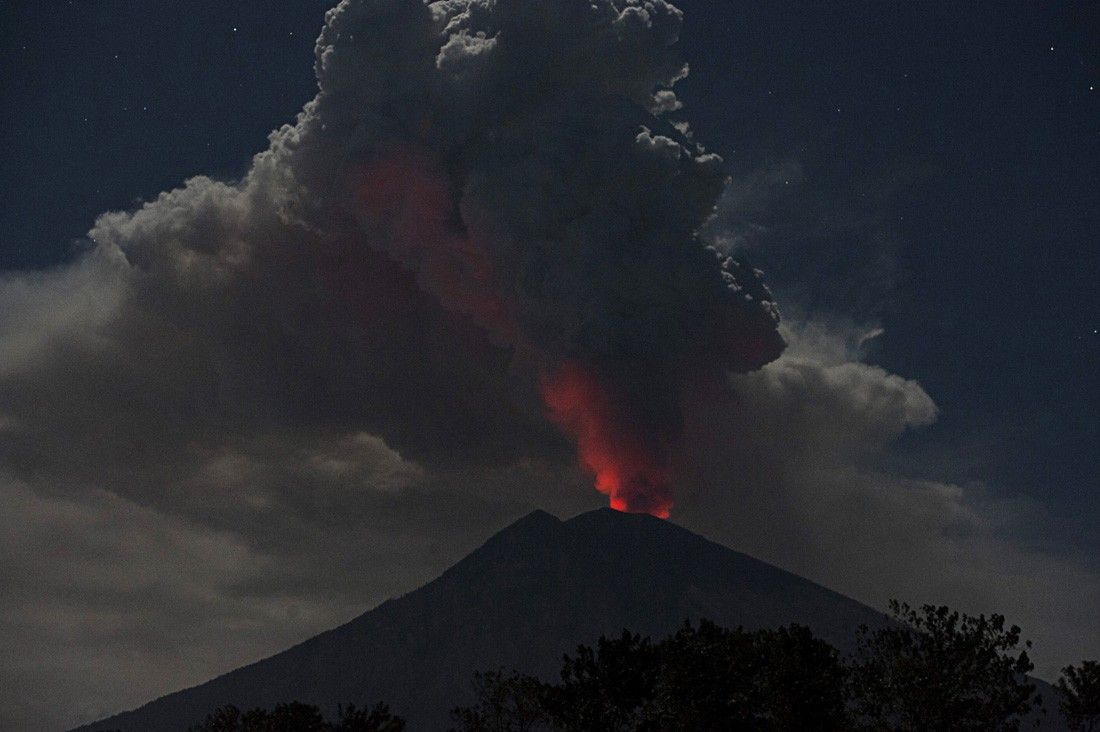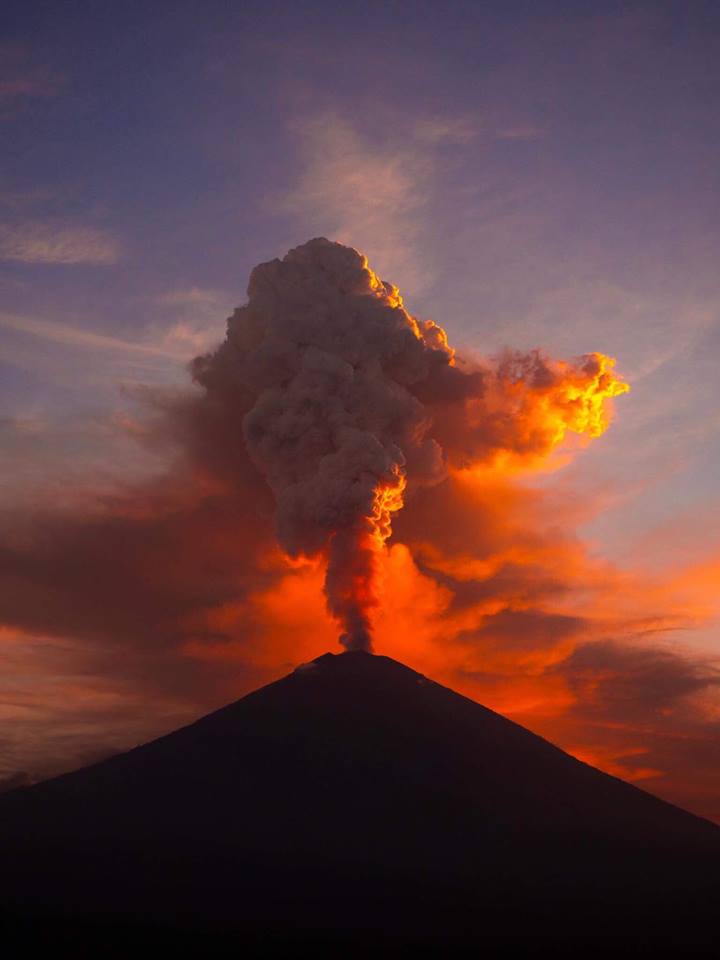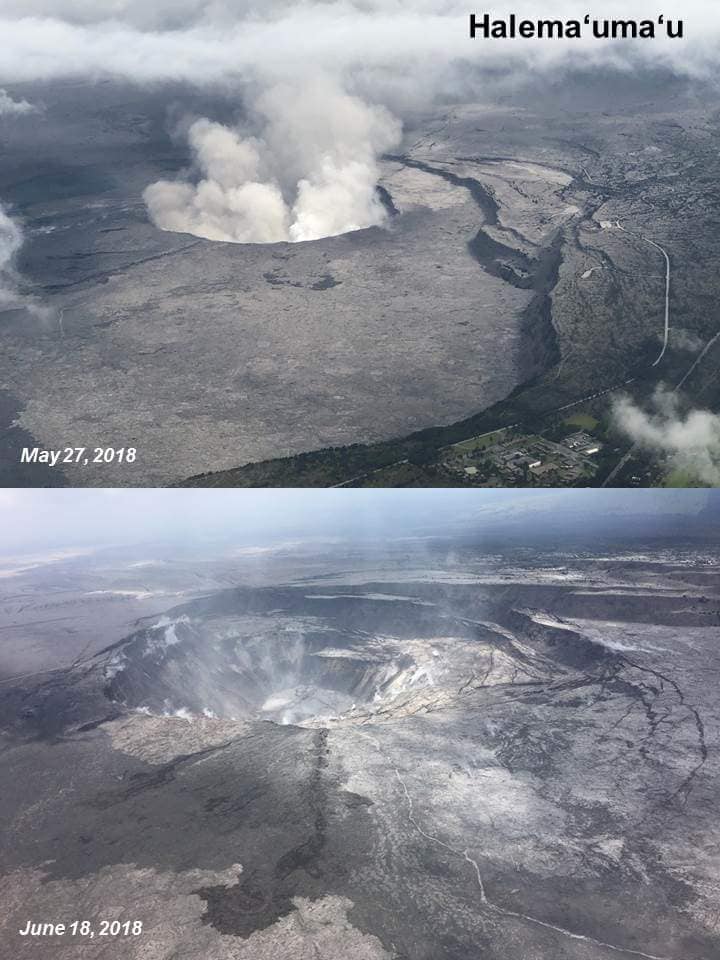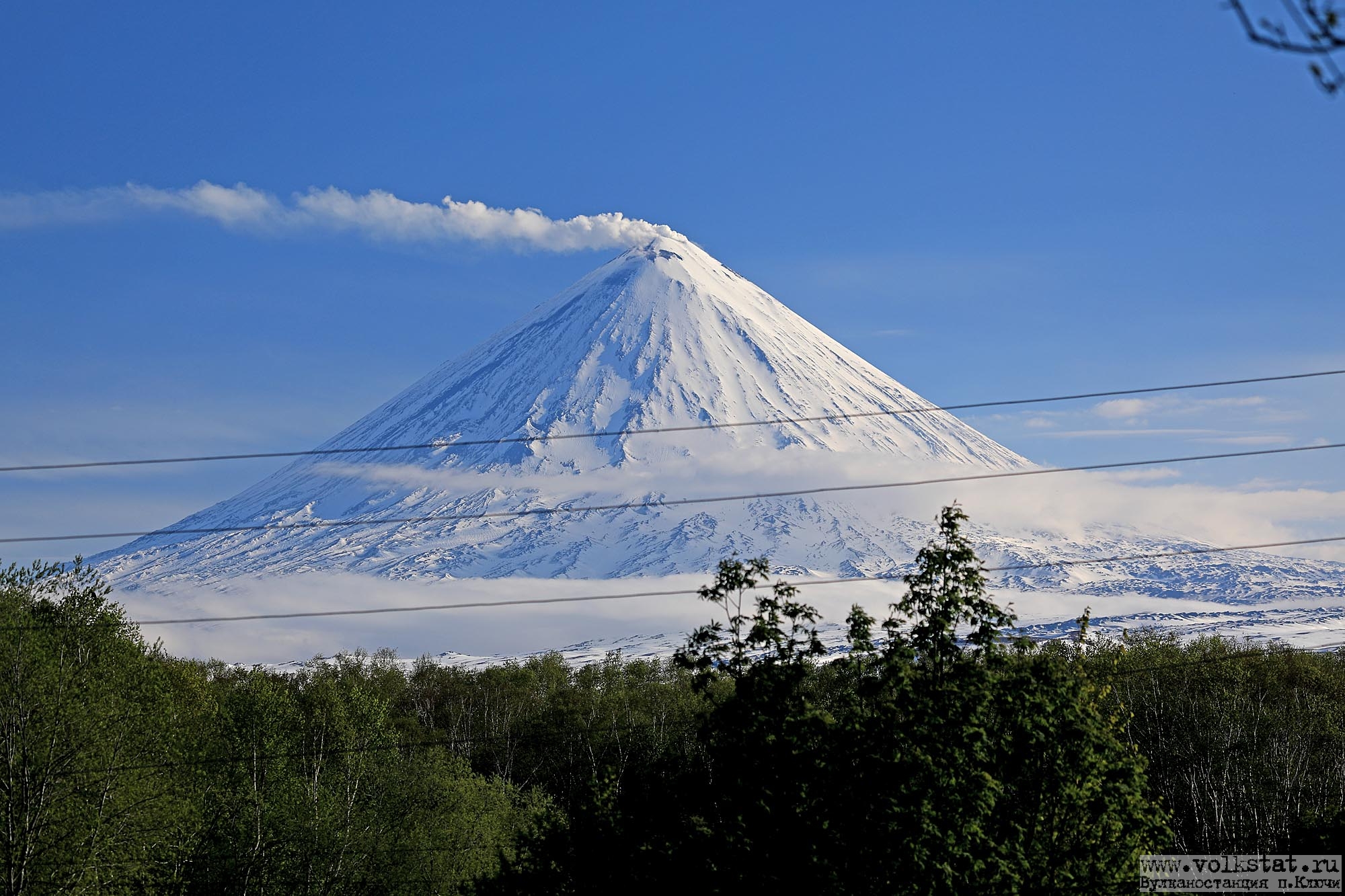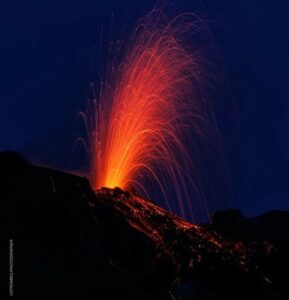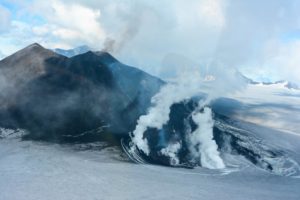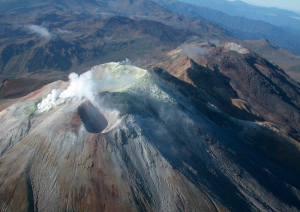June 30 , 2018.
Agung , Indonesia :
Data monitoring:
Visually, the activity of Gunung Agung is still dominated by the emission of gas and ash accompanying the effusion of lava in the crater (the growth of the lava dome inside the crater). The height of the column of emission is between 1500 and 2500 m above the summit. In the night (28 June 2018) and early morning (29 June 2018) there was an incandescent above the crater indicating the presence of fresh lava in the crater. Intensity of gas and ash emissions dropped sharply around 5:00 am WITA (June 29, 2018). In the period from 6 am to 12 pm, gusts of emission are always observed with dominant white colors reaching 1500 m above the peak.
Sequentially, Gunung Agung’s activity is still dominated by low-frequency earthquakes. Low frequency earthquakes are generally related to fluid flow activity. On the Gunung Agung, registered earthquakes usually occur on the surface due to gas and / or ash emissions. The recorded low frequency tremor indicates lava flows on the surface. The number of earthquakes has increased since June 25, 2018 with 15 earthquakes per day; on June 28, 2018, their number reached 69 earthquakes per day. On June 27, 2018 another harmonic tremor earthquake was recorded 5 times with durations ranging from 70 to 292 seconds. On June 28, 2018, tremors of low frequency are recorded continuously from 14:00 (June 28, 2018) and lasted until about 4:00 am (June 29, 2018). After that until 12:00 WITA, the activity is dominated by broadcast tremors. The seismic amplitude of Mount Agung has increased since June 27, 2018 around 20:30 WITA or about 2 hours before the eruption. On June 28, 2018, the observed increase in seismic amplitude has increased since about 09:00, the maximum amplitude occurred around 21:30. After that, the seismic amplitude tended to be constant before finally decreasing sharply at 05:00 WITA. After that, the seismic amplitude model tended to be stable.
The deformation measuring equipment (GPS and Tiltmetres) records an inflation pattern from May 13, 2018 to present with a vertical lift of about 5 millimeters. The uprising that occurs is still below the period from September to October 2017 which reached 6 centimeters.
Geochemically, magma gas SO2, the last time before the June 2018 eruption, was measured with a flow of about 200 tonnes per day.
Thermal satellite images are now recording hot spots in the Mount Agung crater with 819 megawatts of thermal energy and it is the largest thermal energy ever recorded during the 2017-2018 Gunung Agung Crisis. At the end of the November 2017 eruption period, the maximum recorded thermal energy reached 97 megawatts.
Analysis:
The global monitoring data indicate that the phenomenon of gas and ash emissions that occur continuously from yesterday until today is part of the eruption of Mount Agung, namely in the form of lava flows from new in the crater (growth dome / lava basins). This is also indicated by the high thermal energy recorded in the crater of Mount Agung where the lava which has a very high temperature flow (~ 1200 degrees Celsius) fills the crater. The volume of lava in the crater is always unpredictable.
The effusive eruptions can be transformed into explosive eruptions (explosions). It depends on the dynamics of the magma under the volcanic building. In the phase of effusive eruptions, certain accompaniment phenomena can be thunderous sounds, resounding sounds until a fracture around the crater can occur.
So far, Mount Agung is still in a long eruption phase and recorded activity indicates that the Gunung Agung magma system is still very dynamic and not yet stable.
Source : PVMBG, Magma Indonésie
Photo : Antara/Nyoman Budhiana , Ed Fetahovic .
Kilauea , Hawai :
Friday, June 29, 2018, 10:28 AM HST (Friday, June 29, 2018, 20:28 UTC)
19°25’16 » N 155°17’13 » W,
Summit Elevation 4091 ft (1247 m)
Current Volcano Alert Level: WARNING
Current Aviation Color Code: ORANGE
Kīlauea Volcano Lower East Rift Zone
The eruption in the lower East Rift Zone (LERZ) continues with no significant change during the past 24 hours.
Fountains from Fissure 8 spatter cone continue to supply lava to the open channel with intermittent small, short-lived overflows. These overflows rarely extend beyond the existing flow field. No active overflows were observed during this morning’s helicopter overflight.The spatter cone is now about 55 m (180 ft) tall at its highest point, and fountains rarely rise above that point. At the coast, the northern margin of the flow field is still oozing fresh lava at several points in the area of Kapoho Beach Lots and a few burning areas were observed on the south side of the flow and west of highway 137
https://www.facebook.com/G.Brad.Lewis/videos/1379847612118855/
Lava was entering the sea over a broad area this morning primarily on the northern side of the entry area. As shown by yesterday’s thermal map of the flow field, the lava channel has crusted over about 0.8 km (0.5 mi) inland of the ocean entry; lava is moving beneath the crust and into still-molten interior of earlier flows before it enters the sea.
Pele’s hair and other lightweight volcanic glass fragments from the lava fountain at Fissure 8 continue to fall downwind of the fissure, dusting the ground within a few hundred meters (yards) of the vent. High winds may waft lighter particles to greater distances. Residents are urged to minimize exposure to these volcanic particles, which can cause skin and eye irritation similar to volcanic ash.
HVO field crews are on site tracking the fountains, lava flows, and spattering from Fissure 8 as conditions allow and are reporting information to Hawaii County Civil Defense. Observations are also collected on a daily basis from cracks in the area of Highway 130; no changes in temperature, crack width, or gas emissions have been noted for several days.
Volcanic gas emissions remain very high from Fissure 8 eruptions.
The ocean entry is a hazardous area. Venturing too close to an ocean entry on land or the ocean exposes you to flying debris from sudden explosive interaction between lava and water. Also, the lava delta is unstable because it is built on unconsolidated lava fragments and sand. This loose material can easily be eroded away by surf, causing the new land to become unsupported and slide into the sea. Additionally, the interaction of lava with the ocean creates « laze », a corrosive seawater plume laden with hydrochloric acid and fine volcanic particles that can irritate the skin, eyes, and lungs.
https://www.facebook.com/ryanfinlay/videos/10155866900875749/
Magma continues to be supplied to the Lower East Rift Zone. Seismicity remains relatively low in the area with numerous small magnitude earthquakes and low amplitude background tremor. Higher amplitude tremor is occasionally being recorded on seismic stations close to the ocean entry.
Kīlauea Volcano Summit
At 07:51 AM HST, after approximately 15 hours of elevated seismicity, a collapse explosion occurred at the summit producing an ash-poor steam plume that rose about 500 ft above the ground surface (~4,500 ft above sea level) before drifting to the SW. The energy released by the event was equivalent to a magnitude 5.2 earthquake. Seismicity dropped abruptly from a high of 30-35 earthquakes per hour (many in the magnitude 2-3 range) prior to the collapse explosion down to 10 or fewer earthquakes per hour afterwards.
Sulfur dioxide emissions from the volcano’s summit have dropped to levels that are about half those measured prior to the onset of the current episode of eruptive activity. This gas and minor amounts of ash are being transported downwind, with small bursts of ash and gas accompanying intermittent explosive activity.
Source : HVO
Photos : Bruce Omori. Teresa Lopez Munoz
Video : G Brad Lewis. USGS/Ryan Finlay.
Sierra Negra , Galapagos / Ecuador :
4.6 magnitude earthquake on Isabela Island.
Published on Friday, June 29, 2018
A 4.6-degree earthquake on the Richter scale was recorded today on Isabela Island, the largest island in the Galapagos archipelago where Sierra Negra Volcano erupted last Tuesday. the National Institute of Geophysics of the Ecole Polytechnique.
According to this institution, the earthquake occurred at 5:07 am local time (10:07 GMT) at 5.43 km deep and 17.66 km from Puerto Villamil.
Two other earthquakes, of 3 and 3.6 degrees, preceded the earthquake of magnitude 4.6 in the early hours, according to data from the Geophysical Institute, which reported Thursday a dozen tremors, the weakest of M2 , 7 and the most important of M4.1 on Isabela Island.
The Sierra Negra volcano, which erupted last Tuesday, is one of five active volcanoes on Isabela Island, the most westerly in the archipelago.
Its crater has a diameter of 10 kilometers and before the eruption this week, others were recorded in 1979 and 2005, according to data from the Directorate of National Park Galapagos (DPNG).
The authorities have declared the orange alert, and although last Wednesday, before the decline in seismic activity, the Special Operations Committee decided to authorize the return to their villages to the evacuees due to the eruption. visits on the volcano, they remain suspended.
According to the GNP, the four giant tortoise populations of the species Chelonoidis guntheri and a population of land iguanas on the east side of Isabela Island are protected because the lava flows are directed to the north. West of the caldera.
The Sierra Negra volcano has had significant seismic activity since mid-2016, and its current eruption coincided with a few days ago on La Cumbre volcano, Fernandina Island, next to Isabela Island, which emitted lava flows that have reached the sea.
Source : La Republica
Photo : Giancarlo Toti .
Klyuchevskoy , Kamchatka :
VOLCANO OBSERVATORY NOTICE FOR AVIATION (VONA).
Issued: June 28 , 2018
Volcano: Klyuchevskoy (CAVW #300260)
Current aviation colour code:YELLOW
Previous aviation colour code:orange
Source: KVERT
Notice Number:2018-54
Volcano Location:N 56 deg 3 min E 160 deg 38 min
Area:Kamchatka, Russia
Summit Elevation:15580 ft (4750 m)
Volcanic Activity Summary:
Activity of the volcano decreased – only a gas-steam activity of the volcano is noting. A single ash plume from the volcano was observed on 15 June last time; in the other days the volcano was quiet or obscured by clouds. KVERT continues to monitor Klyuchevskoy volcano.
A gas-steam activity of the volcano continues. Ongoing activity could affect low-flying aircraft.
Volcanic cloud height:
NO ASH CLOUD PRODUSED
Other volcanic cloud information:
NO ASH CLOUD PRODUSED
Source : Kvert
Photo : Volkstat ru , Yu. Demyanchuck.

